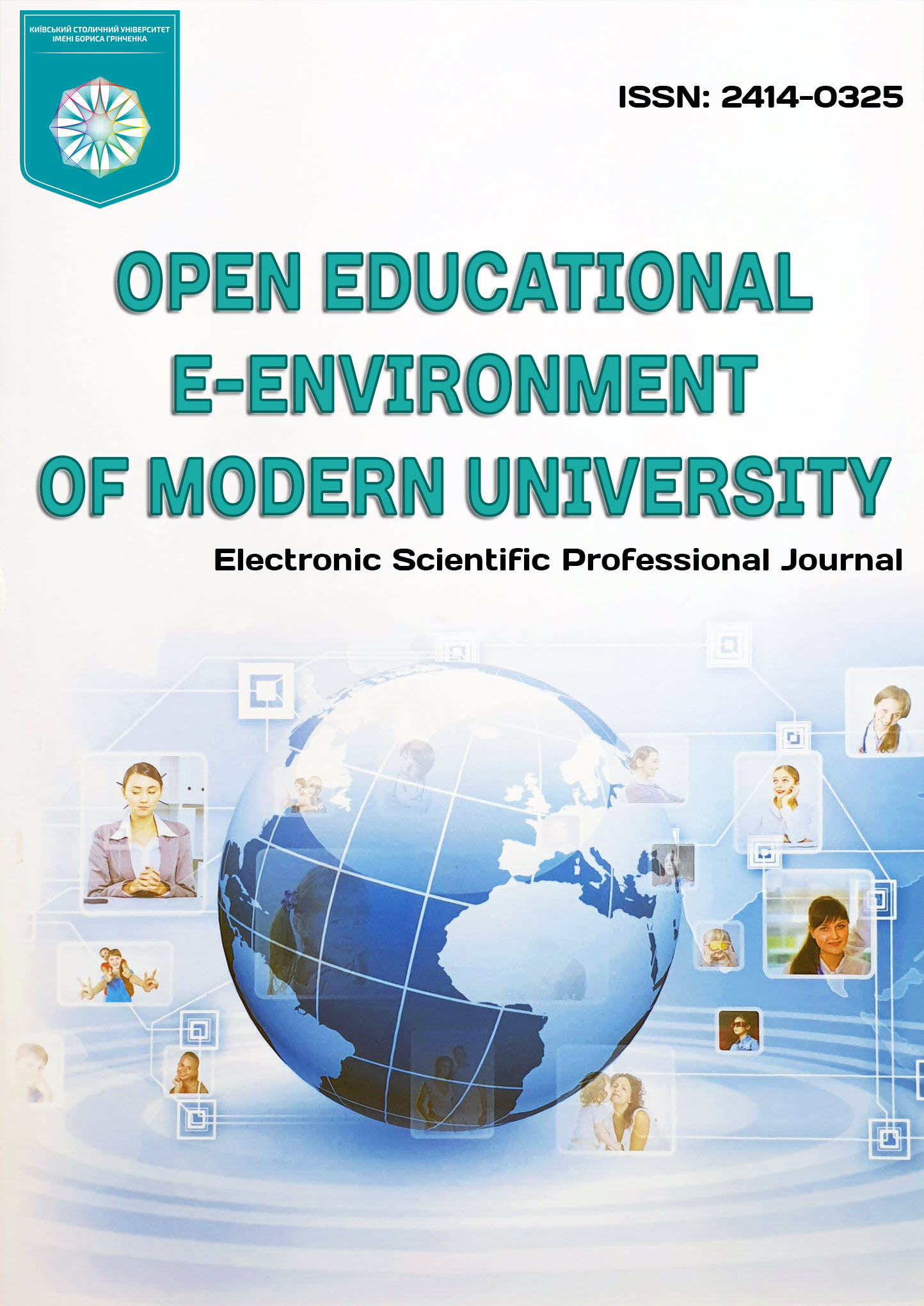USING CORPORATE MECHANISMS TO IMPROVE ACADEMIC ENGLISH LANGUAGE PROFICIENCY AMONG POSTGRADUATE STUDENTS: IMPACT ON THE LEARNING PROCESS
DOI:
https://doi.org/10.28925/2414-0325.2025.1814Keywords:
concordancers, professional foreign language, postgraduate students, agronomy, grammatical structures, terminology, fixed expressions, Grammarly, ChatGPTAbstract
A high level of proficiency in academic English is a prerequisite for the successful functioning of postgraduate students in the scientific and educational environment. This includes an accurate presentation of scientific ideas in both written and oral forms, presentation of research results at international events, access to publications in world scientometric databases and the ability to publish one's work. In the modern educational context, technologies, in particular concordancers, play an important role in developing academic foreign language competence and forming independent work skills. The study aimed to assess the effectiveness of the use of concordancers (AntConc and Lextutor) in the formation of academic foreign language competence of postgraduate students in the speciality Agronomy and to compare them with alternative means - online resources and applications based on artificial intelligence (Academic Phrasebank, Google Scholar Tools, Grammarly, ChatGPT). The study involved 30 first-year postgraduate students divided into experimental and control groups. The methodology included diagnostic (pre-test) and final (post-test) testing, which covered theoretical questions, analysis of a fragment of a scientific text and writing an essay in a scientific style. Statistical processing of the results was carried out using the Student's t-test. In addition, students filled out a questionnaire with open and closed questions, which were analyzed quantitatively and using the open coding method.
The study results showed a significant improvement in academic writing in the experimental group, which confirms the effectiveness of using corpus tools in teaching academic English. Most students highly appreciated the capabilities of AntConc, in particular the analysis of terminology, grammar and stable expressions. At the same time, some respondents noted the complexity of the interface and the need for additional methodological materials. Therefore, it is advisable to create step-by-step instructions, involve teachers of computer disciplines in the educational process and increase the number of practical classes.
Downloads
References
Weber, J. (2001). A concordance-and genre-informed approach to ESP essay writing. ELT Journal, 55(1), 14-20. https://doi.org/10.1093/eltj/55.1.14
Hüttner, J. (2010). The potential of purpose-built corpora in the analysis of student academic writing in English. Journal of Writing Research, 2(2), 197-218. https://doi.org/10.17239/jowr-2010.02.02.6
Boulton, A. (2016). Integrating corpus tools and techniques in ESP courses. ASp. la revue du GERAS, (69), 113-137. https://doi.org/10.4000/asp.4826
Karpenko-Seccombe, T. (2018). Practical concordancing for upper-intermediate and advanced academic writing: Ready-to-use teaching and learning materials. Journal of English for Academic Purposes, 36, 135-141. https://doi.org/10.1016/j.jeap.2018.10.001
Argyroulis, V. (2022). Investigating student motivation in the use of corpus concordancing in ESP learning at university level. ESP Today, 10(1), 71-98. https://doi.org/10.18485/esptoday.2022.10.1.4
YouTube. (2022). YouTube tutorials on AntConc by Laurence Anthony. https://www.youtube.com/watch?v=_GSlwIO5QZE&list=PLiRIDpYmiC0SjJeT2FuysOkLa45HG_tIu&index=1
YouTube. (2022). YouTube tutorials on lexical bundles and keyword analysis by Monika Bednarek. https://www.youtube.com/watch?v=W_yBNVOmaNM&list=PLiRIDpYmiC0TUot9nfW2BSK0thsvAzErx&index=3
YouTube. (2019). YouTube tutorials on corpus analysis for academic writing by Umair Ibne Abid. https://www.youtube.com/watch?v=GOLBHOxjRHI&list=PLAcqtFsfySfWUKFXwFTSpC1R7F2aIrCbo&index=2
Youku. (2022). Youku tutorials on corpus analysis by Laurence Anthony. https://v.youku.com/v_show/id_XNjQwMTU3ODMy.html
Amuza, A., & Leonard, I. L. I. E. (2024). Research on earthworm community in maize crop in Borcea, Călărași. Scientific Papers. Series A. Agronomy, 67(2), 13-18.
Avram, C. R., Bătrîna, Ș. L., Imbrea, I., Botoș, L., Niță, S., Crista, F., ... & Imbrea, F. (2024). Study of agronomic characteristics of an assortment of sweet corn hybrids. Scientific Papers. Series A. Agronomy, 67(2), 103-107.
Wang, J., Cheng, S., Wang, E., Ma, A., & Hou, G. (2024). Impact of wheat-Agropyron germplasm on the improvement of grain weight and size: A comprehensive QTL analysis. The Journal of Agricultural Science, 162(6), 562-572. https://doi.org/10.1017/S0021859624000534
Rizan, N., Balasundram, S., Shahbazi, A., Balachandran, U., & Shamshiri, R. (2024). Internet-of-things for smart agriculture: Current applications, future perspectives, and limitations. Agricultural Sciences, 15, 1446–1475. https://doi.org/10.4236/as.2024.1512080
Published
How to Cite
Issue
Section
License
Copyright (c) 2025 Chaikovska O.

This work is licensed under a Creative Commons Attribution-NonCommercial-ShareAlike 4.0 International License.













1.jpg)








